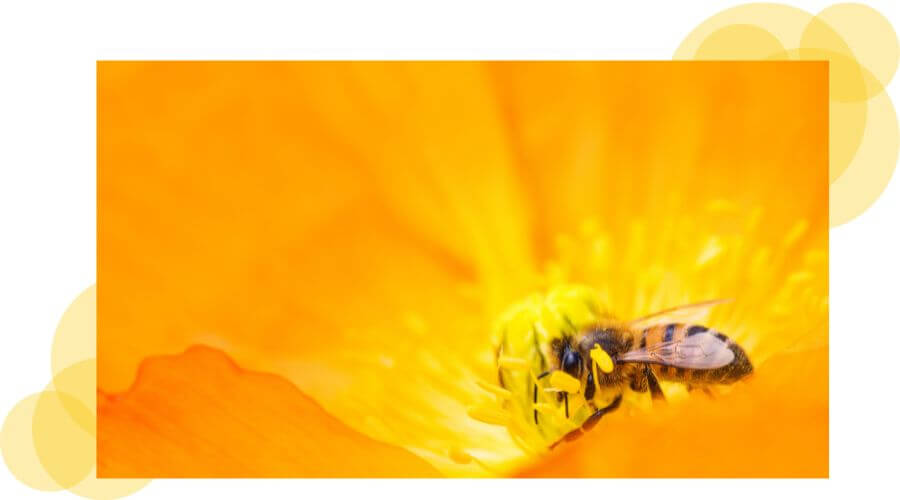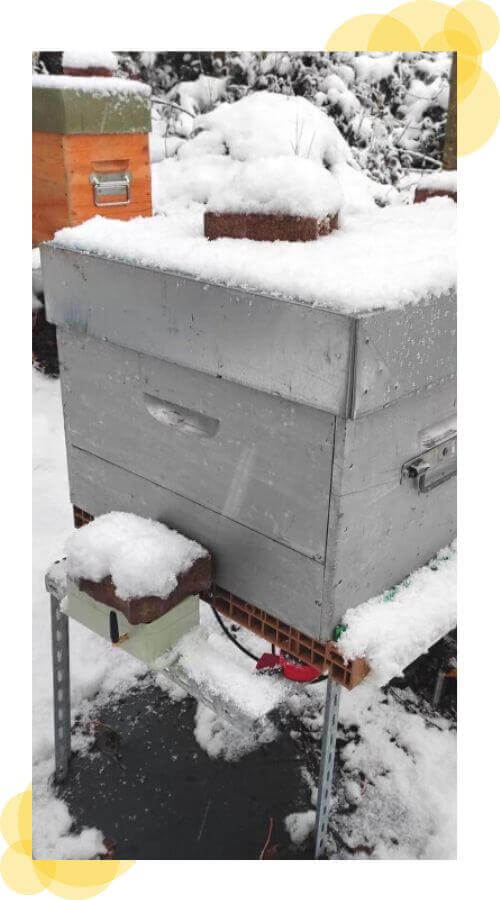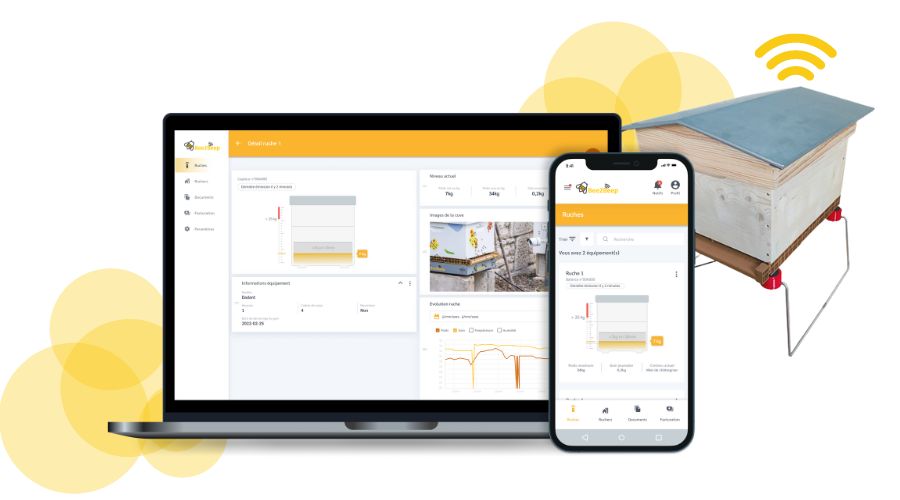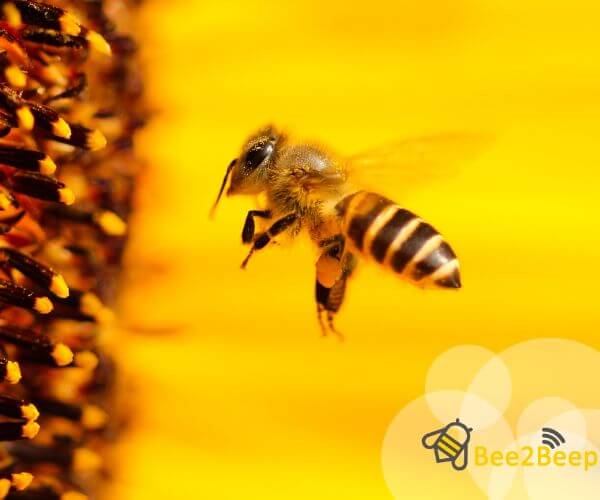

Useful information about your hive all year round!
The connected hive scale, a tool for all beekeepers! Whether it is practiced in amateur or as a professionalbeekeeping is a resourceful and exciting activity in every way.
A source of inspiration for many enthusiasts, bees no longer have to prove their incredible talents.
More than
20 000 races of bees
exist in France.
Depending on the type of product and beekeeping practiced, beekeepers often work with the Apis Mellifera Mellifera (Black Bee), the Api Mellifera Ligustica (Italian bee), the Apis Mellifera Caucasica (Caucasian) or the Carniolan and the Buckfast.
Discover here the different breeds of bees used in Apiculture
The beekeeping season is divided into two main parts
the Wintering and the Production period (honey flow).
Track and detect a start and end of honeyflow with your connected hive scale!
During the production period, the foragers go in search of nectar. The scouts are the first to find the best resource before returning to the hive, indicating the position of the hive through a dance that will guide the other foragers.
When a flower is in full bloom, it is called a honeydew.
Honey flow is the peak of activity of the bee swarms
. This is the most favorable period for the bees and the beekeeper, when honey production is intense and abundant. In temperate climates, honeyflow occurs in spring and summer. And to make the most of it, the beekeeper must establish a schedule.

The different honey flows depend on the location of your apiary, some have a plurality of blooms throughout the year allowing them to make 3-4 types of honey in the same area at different times when others have only one or two major blooms justifying an abundant harvest. The beekeepers represented in this second case generally practice transhumance in order to migrate the hives to a different floral region so as to benefit from additional honey flow.
The connected hive scale is an important indicator to track the beginning and end of a honey flow. The intensity of these is directly related to simple external factors such as temperature and humidity, but also to more complex factors such as the type of crop, soils, typology of colonies.
Monitoring a honey flow is important in every way, even more so if this monitoring is done with a connected hive scale that will provide you with accurate information. Indeed, the accuracy of the information provided by your connected scale will condition your interventions and more particularly the raising and harvesting.
If the honey supers are installed too late, this can slow down the colony and therefore affect production, just as if the harvest is too late, the bees may consume the honey stored in the supers while waiting for the next nectar..

Control the weight of your hives during wintering with your connected hive scales!
Overwintering is a phase during which the colony is least populous, the queen no longer lays eggs and the winter bees keep the colony warm until spring. Without melliferous resources and unable to forage in winter in our regions, the bees survive thanks to the reserves left by the beekeeper and the food he provides.
It is imperative to monitor the progress of the depletion of reserves,
because without food the bees will not have enough energy to maintain the colony at temperature and if this goes on too long they may die of starvation and cold.
In order to guarantee a sufficient level of reserves, it is important to weigh the hives.
Many beekeepers equipped with a scale come to check the reserve level of their colonies with a needle scale. This method is very useful to know the reserves at a moment T and anticipate a feeding or not.
This method has however limits, indeed, to know the weight of the hives before the winter is important but what is essential is to follow its evolution. Many external factors precipitate or slow down the consumption of reserves by the bees, the quality of the insulation, the weather conditions but also the strength of the winter colony.
In order to follow the evolution of the hives, it would be necessary to be able to move regularly in the apiary and to keep a weight book of the hives to measure their consumption levels. This work is of course tedious and very time consuming when you have several apiaries. Moreover it would be only on the spot that the decision to feed or not would be taken and that would not allow to anticipate the material to bring on the apiary before the visit.
In order to solve this problem,
it is possible to use a connected scale to weigh the hives continuously and to follow the evolution of their weight from a distance.

Can I easily install a connected hive scale?
In conclusion, thehe installation of a Bee2beep connected scale under a beehive is very simple, it is positioned directly on your support and comes to receive your beehive. Once in place, simply start it with a magnet to enjoy real-time tracking. The connected scale will communicate the weight of your hive every 30 minutes.
This weight data will be visible online via numerous visualization tools and can accompany you throughout the year in keeping an eye on our precious bees. 🐝

